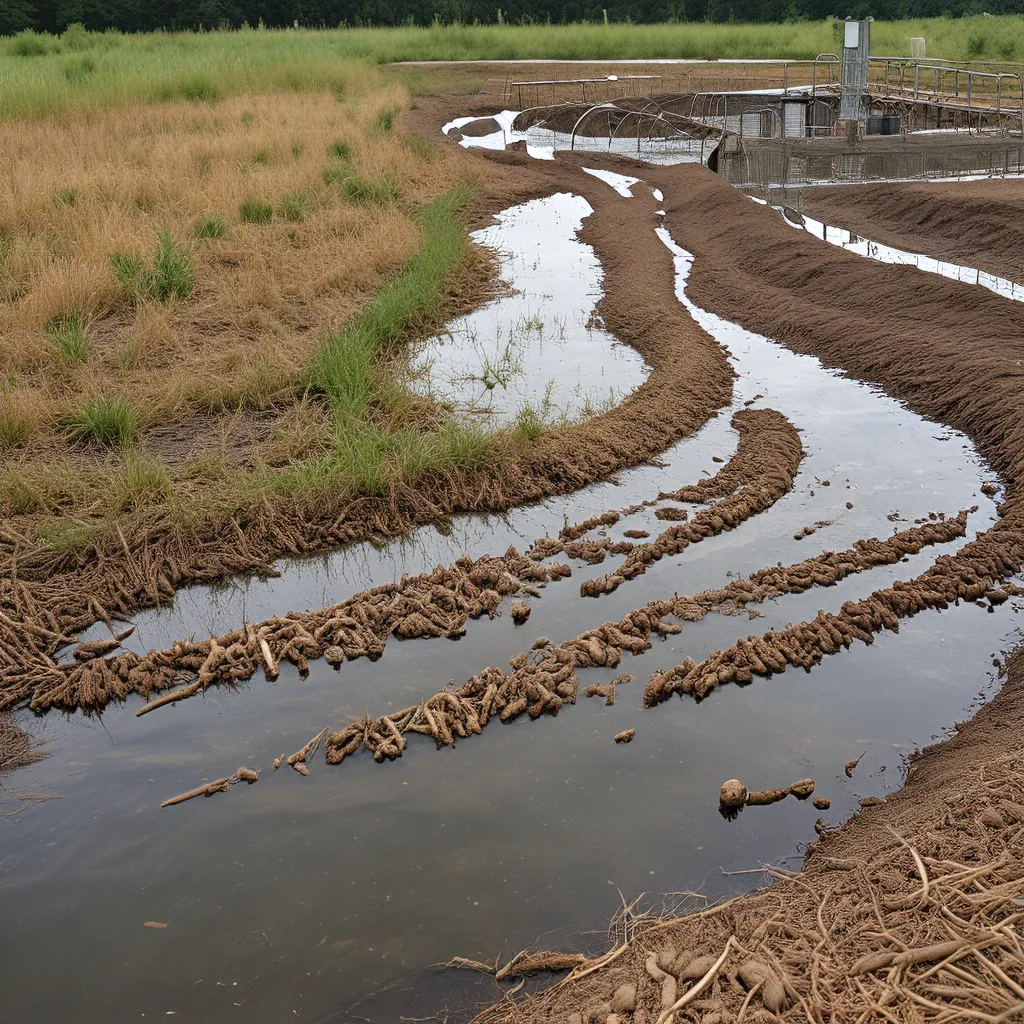
As an environmental enthusiast, I’ve always been fascinated by the inner workings of our wastewater treatment systems. You might be surprised to learn that these unsung heroes of the water cycle hold the key to unlocking a sustainable bioeconomy – a future where our waste becomes our most valuable resource.
Let me take you on a journey through the fascinating world of wastewater treatment and how it’s poised to revolutionize the way we think about waste management. Strap in, because this is going to be one wild ride!
Wastewater: The Untapped Treasure Trove
When most people think of wastewater, they probably picture a smelly, murky mess that needs to be flushed away as quickly as possible. But what if I told you that this “waste” is actually a treasure trove of valuable resources just waiting to be extracted?
Think about it – our wastewater is chock-full of biomass, which is essentially plant and animal-derived organic matter. This biomass contains a wealth of nutrients, energy-rich compounds, and even valuable bioproducts like bioplastics and biofuels. It’s like a natural cornucopia, and we’ve been letting it go to waste (pun intended) for far too long.
The Rise of the Bioeconomy
The bioeconomy is a fancy term that refers to the economic activities and innovations driven by biological resources. And let me tell you, the bioeconomy is on the rise! As the world grapples with the challenges of climate change, resource depletion, and the need for sustainable solutions, the value of our biological resources has never been higher.
Wastewater treatment facilities are at the heart of this bioeconomy revolution. By extracting and repurposing the valuable components from wastewater, these facilities can produce a wide range of bioproducts that can be used in everything from construction materials to cosmetics.
Imagine a world where we no longer have to rely on fossil fuels and non-renewable resources, but instead, we can tap into the abundant and renewable supply of biomass generated by our own wastewater systems. It’s a game-changer, my friends, and it’s happening right under our noses.
Unlocking the Potential of Wastewater
So, how exactly are wastewater treatment facilities unlocking the potential of this bioeconomy goldmine? It all starts with the anaerobic digestion process.
Anaerobic digestion is a fancy way of saying that microorganisms break down organic matter in the absence of oxygen. This process not only helps to purify the water, but it also generates a valuable byproduct called biogas. Biogas is a renewable fuel that can be used to generate electricity, heat, or even be upgraded to biomethane for use as a transportation fuel.
But the benefits of wastewater treatment don’t stop there. The remaining digestate from the anaerobic digestion process can be further processed into a nutrient-rich biofertilizer, which can be used to enrich agricultural soils and promote sustainable food production.
And that’s just the tip of the iceberg. Researchers are constantly exploring new ways to extract and repurpose the various components of wastewater, from the cellulose and lignin in the biomass to the lipids and proteins that can be used in a wide range of industrial applications.
The Future of Wastewater Treatment
As exciting as all of this sounds, we’re still just scratching the surface of what’s possible when it comes to the bioeconomy and wastewater treatment. Scientists and engineers are working tirelessly to develop new technologies and processes that can maximize the recovery of valuable resources from wastewater, while also improving the overall efficiency and sustainability of the treatment process.
One particularly promising avenue of research is the use of microbial fuel cells (MFCs) in wastewater treatment. MFCs are essentially miniature power plants that use microorganisms to convert the organic matter in wastewater into electricity. This not only helps to offset the energy costs of treatment, but it also creates a closed-loop system where the waste is used to generate the power needed to treat it.
Another exciting development is the use of biorefinery concepts in wastewater treatment. Biorefineries are facilities that can extract and process a wide range of valuable bioproducts from biomass, including biofuels, bioplastics, and specialty chemicals. By integrating these biorefinery principles into wastewater treatment, we can create a truly circular economy where our waste becomes our most valuable resource.
Overcoming the Challenges
Of course, as with any transformative technology, there are still some challenges that need to be addressed before we can fully realize the potential of wastewater-based bioeconomy. Cost and scalability are two of the biggest hurdles, as the infrastructure and processes required for advanced wastewater treatment and biorefining can be quite expensive to implement.
There are also concerns about the potential environmental impacts of certain bioproducts, such as the use of bioplastics or the disposal of biofertilizers. Careful research and regulation will be needed to ensure that the benefits of the bioeconomy outweigh any potential drawbacks.
But I’m confident that we’re up for the challenge. After all, the stakes are too high to ignore the incredible potential of our wastewater resources. By embracing the bioeconomy and investing in the future of wastewater treatment, we can create a more sustainable, circular, and resilient future for all.
Exploring the Possibilities
If you’re as excited about the prospect of a wastewater-driven bioeconomy as I am, I encourage you to explore the wealth of resources available on this topic. The National Institutes of Health and the Science Direct website are both excellent starting points, providing insights into the latest research and developments in this rapidly evolving field.
And of course, I can’t forget to mention the fantastic services offered by Alpha Wastewater, a leading provider of wastewater treatment solutions. Their expertise and cutting-edge technologies could be the key to unlocking the full potential of your facility’s biomass and bioproducts.
So, what are you waiting for? Let’s dive in and explore the exciting world of wastewater-based bioeconomy together! Who knows, we might just stumble upon the next big breakthrough that could change the world.